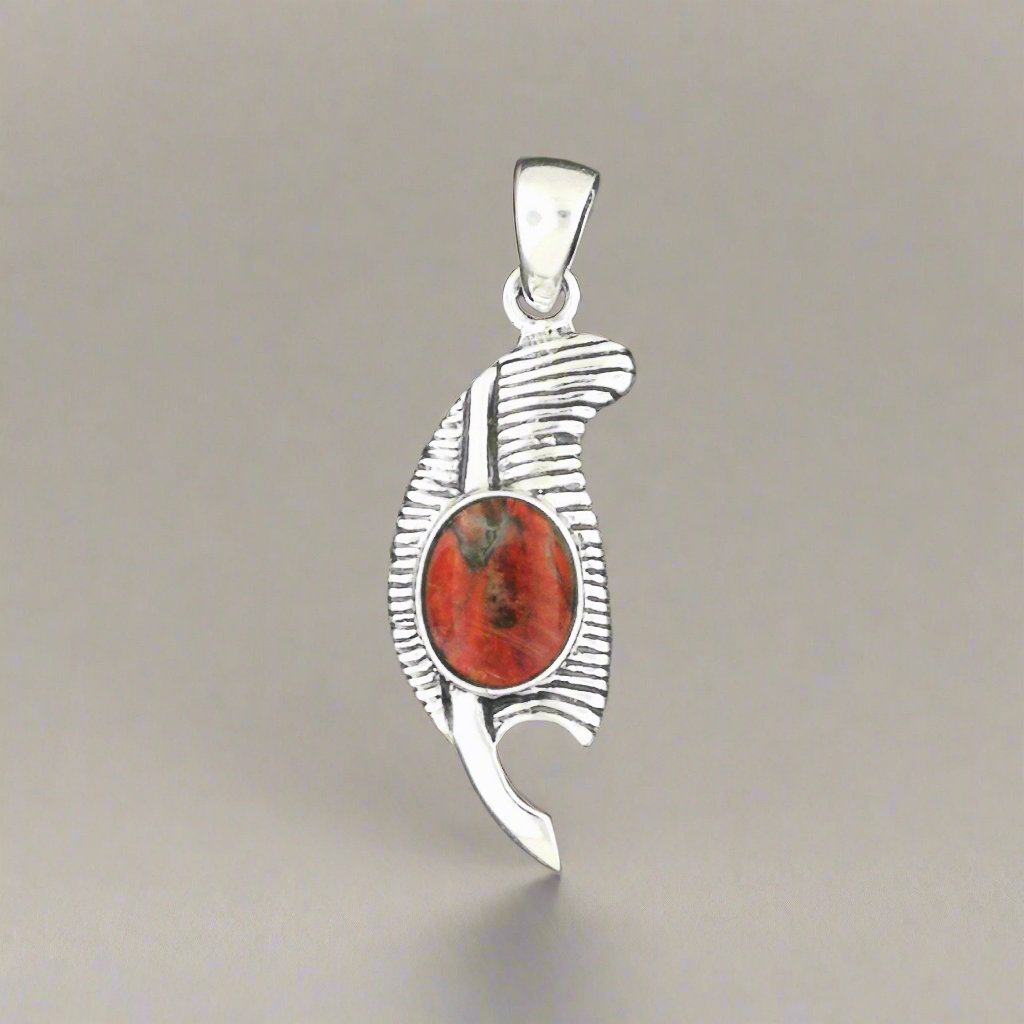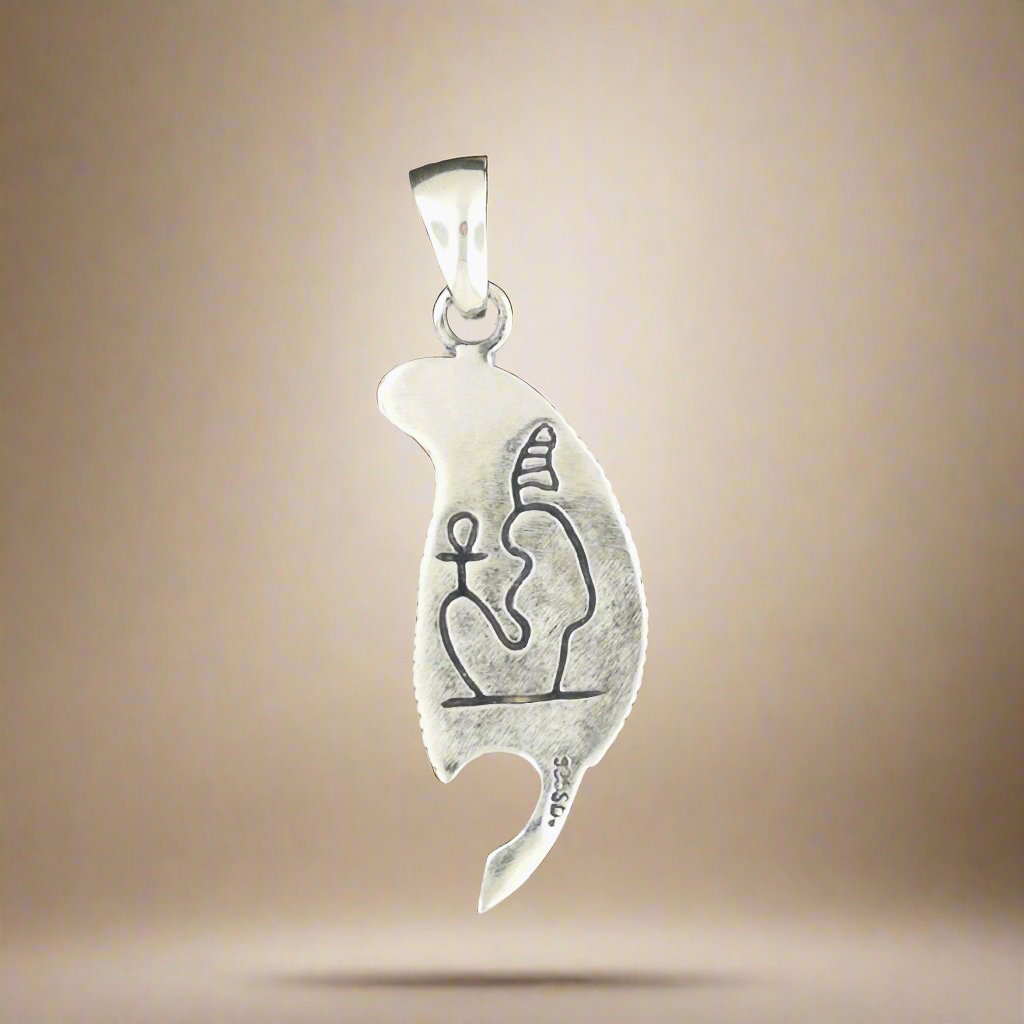LeDragonArgente
Feather of Ma'at Pendant in Sterling Silver with Ammolite
Feather of Ma'at Pendant in Sterling Silver with Ammolite
Share
Average Processing Time
Average Processing Time
Sterling Silver & Bronze : 1-2 weeks to make
Stainless Steel : 2-3 weeks to make
Bracelets & Gold : 2-3 weeks to make
Shipping times
Shipping times
Shipping info: Shipping is with tracking and full insurance. For international buyers, please be aware of taxes & duties are payable to your country by the buyer and is not collected by me.
Standard Shipping
Canada & USA: 1-2 weeks regular mail
Internatonal: 3-6 weeks depending on customs inspections
DHL Shipping Upgrade : 3-8 business days
Return Policy
Return Policy
For anything other than gold or custom orders, I will accept returns only as long as I am notified and is mailed back to me in Canada within 14 days of you receiving it in the original packaging and in an unworn condition and will be subject to a 10% restocking fee. Shipping is non-refundable.
I must be contacted first before attempting to return the item, or it will be considered a forced return, thus voiding the refund option.
Customers are responsible for the return shipping costs and I will refund minus the restocking fee on the item once I've received it back in my hands.
Important info about gold jewellery & Special Orders: All my gold jewellery is made per order and is not eligible for returns or refunds. Gold orders are not stock items as they are made only upon ordered. So please take this into consideration when you place your order.
Ordering from the UK and EU? Please read update.
Couldn't load pickup availability
Looking for a piece that’s not just stunning but also steeped in history and meaning? This handmade sterling silver feather pendant, set with a vibrant 8x10 mm ammolite, is your next statement piece!
On the front, you’ve got a gorgeous ammolite gemstone—formed from fossilized ammonite shells, giving it that mesmerizing, opal-like shimmer. Flip it over, and you’ll find the glyph of the goddess Ma'at, the ancient Egyptian symbol of truth and balance. In Egyptian mythology, Ma'at’s feather was weighed against the souls of the dead to see if they were worthy of the afterlife. Talk about carrying a piece of history!
Details:
- Materials: made in classic .925 sterling silver, a mix of 92.5% fine silver and 7.5% copper. Free of nickel, zinc or cadmium, which are common metal allergens & can cause rashes and sores!
- Dimensions: The pendant measures 3.5cm long plus the bail and 1.5 cm wide.
- Choose the perfect stone for you! Select from a variety of different colour natural gemstones and imitation birthstones. Stones are cabochon/domed cut.
- Shipping Info: shipping is with tracking and full insurance. For international buyers, please be aware of taxes and duties are payable to your country and must be paid by the buyer and is not collected by me.
- For any questions about my materials, processing time, and more, check out my FAQ for more info!
Maat or Ma'at refers to both the ancient Egyptian concepts of truth, balance, order, harmony, law, morality, and justice, and the personification of these concepts as a goddess regulating the stars, seasons, and the actions of both mortals and the deities, who set the order of the universe from chaos at the moment of creation. Her ideological opposite was Isfet, meaning injustice, chaos, violence or to do evil. Maat represents the ethical and moral principle that every Egyptian citizen was expected to follow throughout their daily lives. They were expected to act with honor and truth in manners that involve family, the community, the nation, the environment, and the gods.
In the Duat, the Egyptian underworld, the hearts of the dead were said to be weighed against her single "Feather of Ma'at", symbolically representing the concept of Maat, in the Hall of Two Truths. This is why hearts were left in Egyptian mummies while their other organs were removed, as the heart (called "ib") was seen as part of the Egyptian soul. If the heart was found to be lighter or equal in weight to the feather of Maat, the deceased had led a virtuous life and would go on to Aaru. Osiris came to be seen as the guardian of the gates of Aaru after he became part of the Egyptian pantheon and displaced Anubis in the Ogdoad tradition. A heart which was unworthy was devoured by the goddess Ammit and its owner condemned to remain in the Duat.
The symbolism of this pendant makes it so much more than just an accessory. Whether you’re into ancient mythology or just want to bring more harmony into your life, this feather is a wearable reminder to stay balanced and true to yourself. Plus, the ammolite, found in the Alberta Badlands and locally cut in Montreal, adds that extra layer of unique, natural beauty. It’s the perfect piece for anyone looking to blend a love of gemstones with a deep connection to history and spirituality!


JOIN MY MAILING LIST!
Want to be kept in the loop about upcoming shows, updates, and special deals? Join my mailing list and get exclusive news and discounts just for being a fan!


